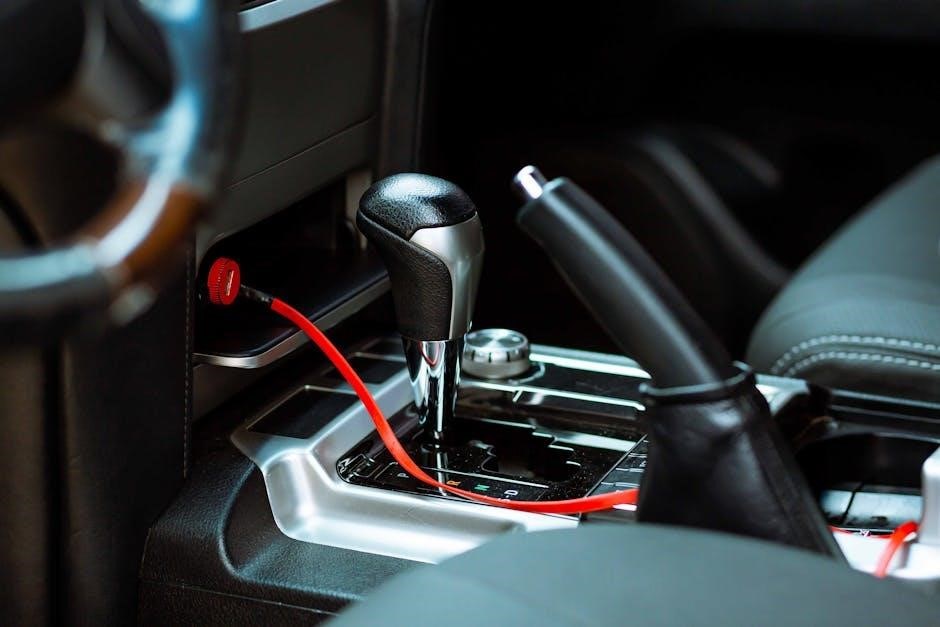Michael Pollan’s In Defense of Food critiques modern diets, advocating for whole foods over processed alternatives. He challenges nutritionism, emphasizing the importance of mindful eating and natural ingredients.
Background of the Book
In Defense of Food: An Eater’s Manifesto is a 2008 book by Michael Pollan, a journalist and activist, that critiques the Western diet and the ideology of nutritionism. The book, published by Penguin Press, became a New York Times bestseller and stayed at number one for six weeks. Pollan builds on his earlier work, The Omnivore’s Dilemma, to explore how modern diets have shifted from whole foods to processed products. He argues that the focus on nutrients rather than food itself has led to confusion and poor health outcomes. Pollan proposes a simple solution: “Eat food. Not too much. Mostly plants.” This manifesto challenges readers to rethink their relationship with food and embrace a more natural, sustainable approach to eating. The book has been widely praised for its clarity and transformative perspective on diet and health.
Reception and Popularity
In Defense of Food received widespread acclaim and became a cultural phenomenon. It debuted at number one on the New York Times Non-Fiction Best Seller List and remained there for six weeks. Critics praised Pollan’s clear, engaging writing style and his ability to simplify complex nutritional concepts. The book’s central message—”Eat food. Not too much. Mostly plants.”—resonated with readers seeking a more holistic approach to diet. Its success led to translations into multiple languages and the release of various formats, including audiobooks and PDF summaries. The book’s popularity also sparked discussions about food culture, health, and sustainability, solidifying Pollan’s status as a leading voice in the food movement. Its impact continues to influence contemporary conversations about nutrition and lifestyle.
Michael Pollan’s Philosophy on Food
Michael Pollan’s philosophy on food, as outlined in In Defense of Food, centers on the idea that people should “Eat food. Not too much. Mostly plants.” He critiques the Western diet’s obsession with nutrients over whole foods, arguing that this approach has led to confusion and poor health outcomes. Pollan advocates for a return to traditional eating habits, emphasizing the importance of real, unprocessed foods. His philosophy is rooted in simplicity, encouraging individuals to focus on quality over quantity and to prioritize plants, which he believes are essential for optimal health. By rejecting the complexities of modern nutritionism, Pollan’s approach aims to empower individuals to make intuitive, healthier food choices. His ideas have resonated widely, inspiring a movement toward more mindful and sustainable eating practices.

The Age of Nutritionism
Nutritionism has transformed our relationship with food, shifting focus from whole foods to individual nutrients, often driven by food science and marketing, leading to confusion and unhealthy dietary habits.
From Traditional Diets to Modern Nutritionism
Traditional diets, shaped by cultural and regional practices, emphasized whole, unprocessed foods like fruits, vegetables, meats, and grains. These diets varied widely but shared a common focus on nourishment and communal eating. In contrast, modern nutritionism emerged in the 20th century, shifting attention from food itself to its constituent nutrients. This reductionist approach, driven by scientific advancements and marketing, led to the rise of processed foods engineered to meet specific nutritional criteria. Pollan argues that this shift has caused widespread confusion, as people now prioritize nutrients over whole foods. The result is a diet dominated by highly processed products, often fortified with vitamins and minerals, but lacking the natural balance of traditional cuisine. This transformation has contributed to rising rates of chronic diseases, highlighting the limitations of nutritionism and the importance of reclaiming whole foods in our diets.

The Shift from Food to Nutrients
The modern food landscape has undergone a profound shift, moving away from whole foods to a focus on individual nutrients. This change, driven by the rise of nutritionism, has led to a fragmented understanding of eating. Foods are now often viewed as mere delivery systems for nutrients like vitamins, minerals, and antioxidants, rather than as complete, natural entities. This reductionist approach has fostered confusion, as consumers are bombarded with conflicting information about what constitutes a healthy diet. Pollan argues that this shift has eroded traditional eating practices, replacing them with a reliance on processed foods engineered to meet specific nutritional criteria. The result is a diet dominated by products that are technically “healthy” but lack the natural balance and simplicity of whole foods. This transformation has contributed to widespread dietary confusion and declining health outcomes, highlighting the need to reclaim a more holistic approach to eating.
The Role of Food Science in Modern Diets
Food science has played a pivotal role in shaping modern diets, often prioritizing nutrient-focused engineering over natural, whole foods. This shift, as highlighted in In Defense of Food, has led to the creation of highly processed products designed to meet specific nutritional criteria. While these foods may boast health claims, they often lack the complexity and balance of traditional foods. Pollan critiques this approach, arguing that it has contributed to widespread dietary confusion and poor health outcomes. The reliance on food science has also perpetuated the notion that eating is primarily about optimizing nutrient intake, rather than enjoying whole, naturally occurring foods. This has resulted in a diet dominated by products that are technically “healthy” but fail to nourish the body in the way that whole foods do. Pollan advocates for a return to simpler, more intuitive eating practices.
The Western Diet and Its Impact
The Western diet, dominated by processed foods, has led to rising health issues. Pollan highlights the American Paradox: increased nutritional focus but declining health outcomes.
Characteristics of the Western Diet
The Western diet is heavily dominated by processed and packaged foods, added sugars, refined carbohydrates, and unhealthy fats. It often lacks whole, unprocessed foods like fruits, vegetables, and whole grains.
This diet is characterized by high calorie intake, large portion sizes, and reliance on convenience foods. It frequently includes industrialized products designed for long shelf lives rather than nutritional value.
Pollan argues that the Western diet has been shaped by food science and marketing, prioritizing profit over health. It is also marked by a disconnect from traditional eating practices and seasonal, locally sourced ingredients.
The diet’s emphasis on convenience and speed has led to a decline in home cooking and communal meals, further eroding the cultural and nutritional value of food. These characteristics contribute to its association with chronic diseases and poor health outcomes.
The American Paradox: More Nutrition, Less Health
The American Paradox, as highlighted in In Defense of Food, refers to the puzzling trend where increased focus on nutrition has not led to better health. Despite advancements in nutritional science, rates of chronic diseases like obesity, diabetes, and heart disease have risen.
Pollan attributes this paradox to the Western diet’s shift from whole foods to processed products, often marketed as “healthy” due to added nutrients. He argues that the obsession with nutrients over food itself has misled consumers, leading to poor dietary choices.
The paradox is further exacerbated by the food industry’s manipulation of nutritional information and the proliferation of highly processed foods. Pollan emphasizes that the more society focuses on nutrition, the further it moves away from the simplicity of eating real, whole foods, which are essential for true health.

Health Consequences of Processed Foods
Processed foods, a cornerstone of the Western diet, have severe health consequences, as outlined in In Defense of Food. These foods, often high in sugar, salt, and unhealthy fats, contribute to chronic diseases like obesity, diabetes, and heart disease.
Pollan highlights how processed foods are designed to be addictive, leading to overconsumption and poor dietary habits. The reliance on these products has disrupted the body’s natural ability to regulate hunger and satisfaction.
Additionally, processed foods often contain artificial additives and preservatives that can harm overall health. The widespread consumption of these foods has been linked to a decline in gut health and an increased risk of inflammation, further exacerbating chronic conditions.
Pollan argues that the food industry’s prioritization of profit over health has fueled the proliferation of these harmful products, making them a central contributor to the modern health crisis.

Escaping the Western Diet

Pollan advocates for a return to whole, unprocessed foods, emphasizing simple rules: “Eat food, not too much, mostly plants.” This approach promotes health and sustainability, countering modern dietary trends.
Pollan’s Three Simple Rules for Eating
Michael Pollan’s three simple rules for eating are: “Eat food, not too much, mostly plants.” These principles aim to simplify dietary choices and promote health. “Eat food” means consuming whole, unprocessed foods rather than products dominated by added sugars, salts, and unhealthy fats. “Not too much” emphasizes moderation and listening to the body’s signals of satiety. “Mostly plants” highlights the importance of fruits, vegetables, and whole grains, which are rich in nutrients and fiber. These rules encourage a return to natural, wholesome eating, avoiding the confusion caused by modern nutritionism. By following these guidelines, individuals can foster better health and a more sustainable relationship with food. Pollan’s approach is both practical and empowering, offering a clear path to escaping the pitfalls of the Western diet.
Redefining “Food” in the Modern Context
Michael Pollan argues that modern society has lost sight of what constitutes “real food.” He distinguishes between whole, natural foods and the highly processed products that dominate supermarket shelves. Pollan contends that real food is what your grandmother would recognize—items that perish quickly, require preparation, and are made from identifiable ingredients. In contrast, many modern “food-like substances” are engineered to be shelf-stable, hyper-palatable, and loaded with added sugars, salts, and unhealthy fats. Pollan emphasizes that these industrial creations often masquerade as food but fail to provide the nutrients and satisfaction that whole foods offer. He suggests that a health claim on a food product is often a sign that it is not truly food at all. This redefinition encourages consumers to rethink their dietary choices and prioritize simplicity, tradition, and nature in their eating habits.
The Importance of Plants in a Healthy Diet
Michael Pollan underscores the vital role of plants in a healthy diet, advocating for a diet rich in fruits, vegetables, and whole grains. He argues that plants provide essential nutrients, fiber, and antioxidants that support overall health and reduce the risk of chronic diseases. Pollan emphasizes that plants should form the foundation of meals, aligning with his mantra to “eat mostly plants.” This approach contrasts sharply with the Western diet, which often prioritizes animal products and processed foods. By focusing on plants, individuals can reconnect with natural, whole foods and foster a more balanced and sustainable eating pattern. Pollan’s philosophy aligns with traditional diets from around the world, where plant-based meals have long been associated with longevity and well-being. This simple yet powerful principle encourages readers to embrace the diversity and richness of plant-based eating for optimal health.

Practical Eating Guidelines
Michael Pollan’s practical eating guidelines emphasize whole foods, mindful consumption, and moderation, encouraging a balanced diet that prioritizes natural ingredients and mindful eating habits for better health.

Focus on Whole Foods
In In Defense of Food, Michael Pollan emphasizes the importance of prioritizing whole, unprocessed foods in our diets. He argues that these foods, such as fruits, vegetables, whole grains, and lean proteins, are inherently healthier and more nutritious than their processed counterparts. Pollan contends that whole foods are easier for the body to digest and provide a balanced mix of nutrients, unlike highly engineered products that often dominate modern diets. By focusing on whole foods, individuals can avoid the pitfalls of nutritionism, which often leads to confusion and unhealthy choices. Pollan also highlights the need to avoid foods with lengthy ingredient lists or health claims, as these are typically indicators of processed items. Embracing whole foods fosters a more natural and sustainable approach to eating, aligning with Pollan’s philosophy of simplicity and tradition in diet.
Portion Control and Moderation

In In Defense of Food, Michael Pollan underscores the importance of portion control and moderation as essential principles for a healthy diet. He argues that overconsumption, often driven by the abundance of processed foods, is a key contributor to chronic diseases like obesity and diabetes. Pollan suggests that by eating smaller, balanced portions, individuals can avoid overloading their bodies with excess calories and nutrients. Moderation also extends to avoiding extremes, such as strict dieting or overindulgence, which can lead to unhealthy relationships with food. Pollan’s approach encourages mindful eating, savoring meals, and listening to the body’s hunger cues. This balanced perspective aligns with traditional diets, where moderation is a cornerstone of sustainable and enjoyable eating. By embracing portion control and moderation, individuals can foster healthier habits and a more harmonious relationship with food. This principle is central to Pollan’s vision of a simpler, more intuitive approach to nutrition.
Mindful Eating and Enjoyment of Food
In In Defense of Food, Michael Pollan advocates for mindful eating as a way to reconnect with the joy of food and foster healthier habits. He emphasizes the importance of savoring meals, eating slowly, and paying attention to the sensory experience of food. Pollan argues that modern diets often prioritize quantity over quality, leading to overeating and dissatisfaction. By focusing on the pleasure of eating, individuals can develop a more balanced relationship with food. Pollan also highlights the cultural and emotional significance of meals, suggesting that sharing food with others enhances both enjoyment and satisfaction. He encourages readers to view eating as an opportunity to nourish both the body and the soul, rather than a mere means of sustenance. This approach promotes a more mindful and fulfilling way of engaging with food, aligning with Pollan’s broader philosophy of simplicity and joy in eating.
Sustainable Food Systems
Sustainable food systems emphasize local agriculture, reducing waste, and ethical practices, aligning with Pollan’s vision of a healthier planet through mindful consumption and responsible production methods.
The Role of Sustainable Agriculture
Sustainable agriculture plays a vital role in promoting healthier food systems by prioritizing natural farming methods over industrial practices. Pollan advocates for a shift from chemical-intensive farming to practices that enhance soil health, biodiversity, and ecosystem balance. By supporting local farmers and organic production, sustainable agriculture reduces the environmental impact of food production while ensuring nutrient-rich, whole foods reach consumers. This approach not only addresses the health crisis linked to processed diets but also fosters a more ethical and resilient food system. Pollan emphasizes that sustainable agriculture is essential for reconnecting people with the natural origins of their food, ultimately benefiting both individual well-being and the planet.
Reducing Food Waste
Reducing food waste is a critical step toward creating a more sustainable and ethical food system. Pollan highlights the alarming amount of food discarded in modern societies, often due to overconsumption and expiration dates. He argues that this waste not only depletes resources but also undermines efforts to produce nutritious food. To combat this, Pollan suggests adopting mindful consumption practices, such as planning meals, using leftovers creatively, and avoiding impulse purchases. By valuing food more deeply, individuals can reduce waste while fostering a healthier relationship with what they eat. This approach aligns with Pollan’s broader philosophy of eating responsibly and respecting the resources that go into food production. Reducing waste is not just an environmental imperative but also a way to honor the effort behind growing, processing, and delivering food to our tables.
Ethical Consumption and Food Choices
Ethical consumption is a cornerstone of Michael Pollan’s philosophy, emphasizing the importance of making food choices that align with moral values. Pollan argues that the way we eat has profound implications for the environment, labor practices, and animal welfare. He advocates for choosing whole, locally sourced foods, which support sustainable agriculture and fair labor conditions. By avoiding industrialized and processed foods, consumers can help reduce the exploitation of resources and workers inherent in the industrial food system. Pollan’s guidelines—such as “Eat food, not too much, mostly plants”—promote ethical eating by favoring natural, unprocessed foods over products engineered for profit. This approach not only benefits personal health but also contributes to a more just and sustainable food system. Ethical consumption, therefore, is not just about individual choice but about creating a healthier planet and society.
Cultural and Historical Context
Michael Pollan explores how cultural shifts and historical developments transformed eating habits, replacing traditional diets with processed foods, influenced by food science and marketing.
Traditional Diets and Their Benefits
Traditional diets, as highlighted in In Defense of Food, emphasize whole, unprocessed foods and cultural eating practices. These diets, often passed down through generations, focus on seasonal ingredients, fermented foods, and balanced meals. Pollan argues that such diets promote health and longevity, as they avoid the pitfalls of modern processed foods. For example, Mediterranean and Asian diets, rich in plants, whole grains, and healthy fats, have been linked to lower rates of chronic diseases. Traditional diets also foster a sense of community and mindful eating, contrasting with the rushed, individualistic nature of modern meals. By revisiting these time-tested practices, individuals can reconnect with the simplicity and nourishment of real food, aligning with Pollan’s philosophy of “Eat food, not too much, mostly plants.”
The Rise of Processed Foods in Society
The rise of processed foods has profoundly shaped modern diets, often at the expense of health. Michael Pollan argues that the Western diet’s reliance on processed foods has led to widespread health issues. These foods, often high in added sugars, salts, and unhealthy fats, are designed for convenience and long shelf lives. The food industry’s marketing strategies and the appeal of cheap, accessible options have made processed foods ubiquitous. Pollan highlights how food science has created products that are technically edible but lack the nutritional value of whole foods. This shift has contributed to chronic diseases like obesity, diabetes, and heart disease. The proliferation of processed foods has also eroded traditional eating habits, replacing meals with quick, isolated snacks. Pollan’s critique emphasizes the need to reclaim real food and reject the industrialized versions that dominate modern diets.
Cultural Perceptions of Food and Eating
Cultural perceptions of food and eating have evolved significantly, influencing how societies view meals and ingredients. In In Defense of Food, Michael Pollan explores how food has shifted from being a source of community and pleasure to a commodity driven by convenience and nutritionism. Many cultures historically revered food as a cornerstone of identity and tradition, but modern society often reduces it to a means of sustaining energy. Pollan argues that this shift has led to a disconnection from the joy and simplicity of eating. The rise of processed foods and marketing campaigns has further distorted perceptions, prioritizing nutrients over whole foods. This cultural transformation has fostered confusion and anxiety around eating, prompting Pollan to advocate for a return to mindful, culturally rooted food practices. By reexamining these perceptions, individuals can reclaim the significance of food in their lives and cultures.

Conclusion and Legacy
In Defense of Food has left a lasting impact on food culture, inspiring mindful eating and a return to whole foods. Pollan’s work remains influential, shaping modern dietary practices and sustainability discussions.
Key Takeaways from the Book
In In Defense of Food, Michael Pollan argues that modern diets prioritize nutrients over whole foods, leading to poor health. He advocates for a return to traditional eating habits, emphasizing three simple rules: “Eat food, not too much, mostly plants.” Pollan critiques the ideology of nutritionism, which reduces food to its components rather than valuing it as a whole. He highlights the importance of avoiding processed foods and focusing on natural, unrefined ingredients. The book also explores the cultural and historical contexts of eating, urging readers to adopt mindful and sustainable food practices. By simplifying dietary choices, Pollan aims to help individuals escape the confusion of modern nutrition and reclaim the joy of eating real food.
Impact on Modern Food Culture
In Defense of Food has profoundly influenced modern food culture by challenging the dominance of processed foods and nutritionism. Pollan’s advocacy for whole, unprocessed foods has inspired a shift toward more mindful and sustainable eating habits. The book’s simple yet powerful message—”Eat food, not too much, mostly plants”—has resonated widely, encouraging consumers to rethink their dietary choices. It has also sparked broader conversations about the food industry, prompting greater awareness of the environmental and health impacts of industrial agriculture. Pollan’s work has contributed to the growing demand for transparency in food labeling and the rise of the slow food movement. By emphasizing the cultural and ecological significance of food, In Defense of Food has become a cornerstone of contemporary discussions on nutrition, sustainability, and the future of our food systems.
Michael Pollan’s Other Works and Influence
Michael Pollan, a renowned food journalist and activist, has significantly influenced modern food culture through his writings. His earlier work, The Omnivore’s Dilemma, laid the groundwork for In Defense of Food, exploring the complexities of industrial and alternative food systems. Pollan’s subsequent books, such as Cooked: A Natural History of Transformation and How to Change Your Mind, further delve into food, culture, and human well-being. His advocacy for sustainable agriculture and mindful eating has inspired a global movement, prompting readers to question their food choices. Pollan’s influence extends beyond literature; he has lectured widely, appeared in documentaries like The Botany of Desire, and shaped public discourse on nutrition and environmental ethics. His work continues to challenge industrial food systems, promoting a healthier relationship between people, food, and the planet.






























